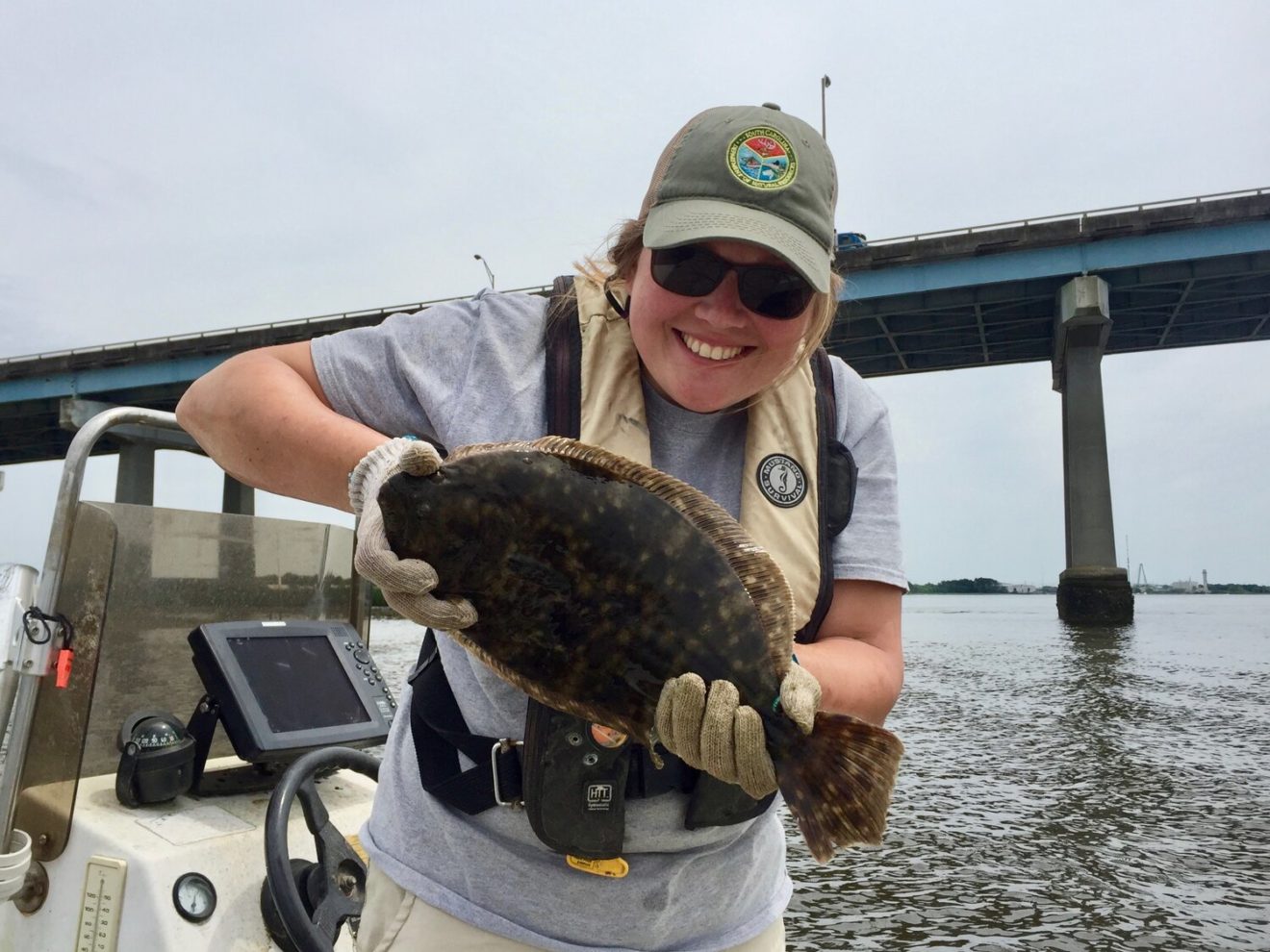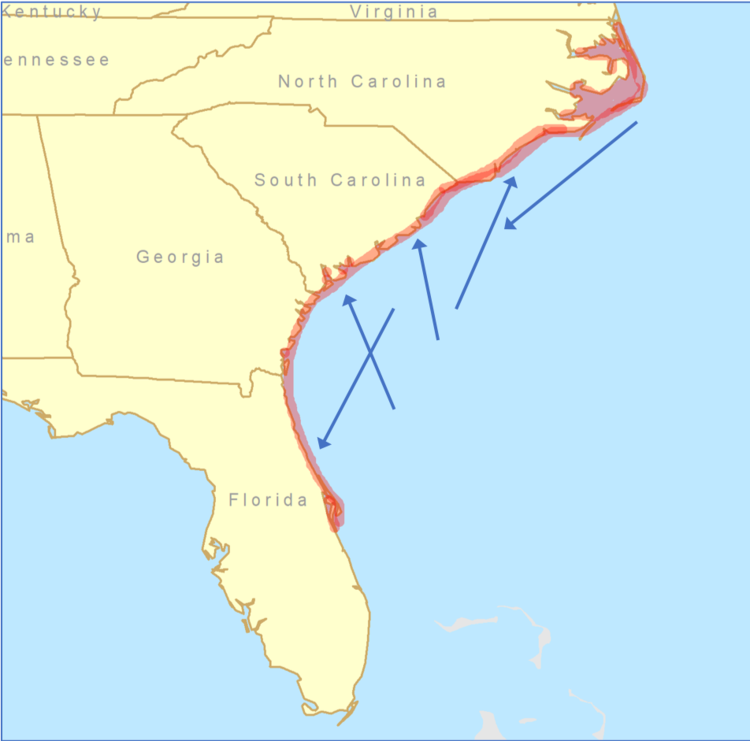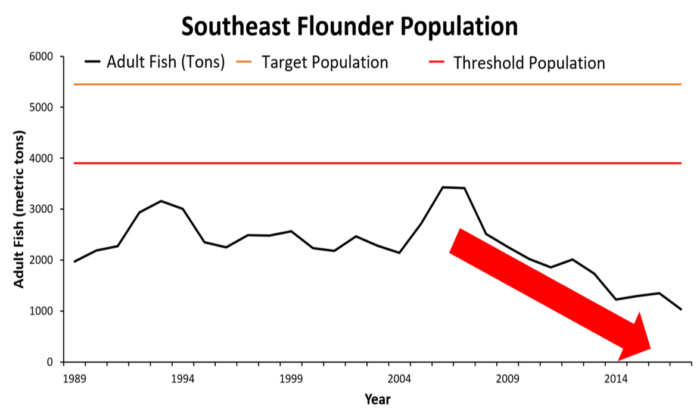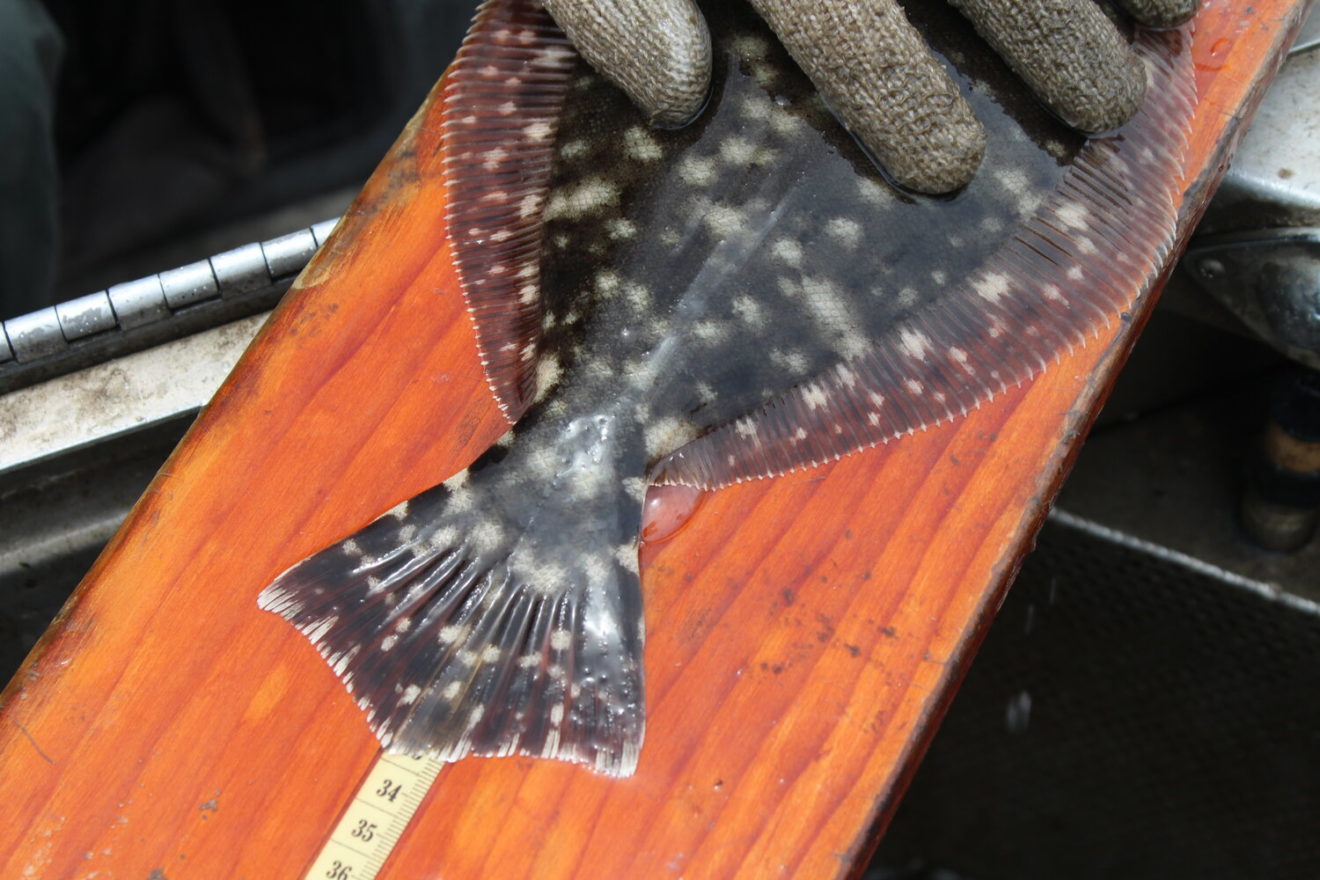Southeast States Flounder Numbers at Record Lows
By Erin Weeks of South Carolina Coastal Resources
“If there’s a finer way to spend a hot summer day than flounder fishing, I don’t know what it is,” wrote outdoorsman Gerald Almy in 2015.
That’s a sentiment shared by many across the Southeast, whose shallow waters are home to three species of the fabled flatfish. Flounder are fascinating predators that put up a fun fight on the line and have inspired volumes of recipes, from breaded and fried to stuffed with crabmeat to seared with lemon.
Flounder are prized in the Southeast – but recent research shows their future is also at risk if action isn’t taken soon across their range.
In early 2019, a team of researchers completed a study looking at the state of southern flounder across northern Florida, Georgia, South Carolina, and North Carolina, using information collected from anglers and biologists in each state. This was the very first assessment of flounder from a regional perspective, which experts deemed necessary because southern flounder in the south Atlantic all belong to one population – flounder are a migratory species that may travel across state lines throughout their lives.
What the study found was alarming: flounder numbers across the region are hovering at historically low levels and have been overfished for decades.
North Carolina officials responded by immediately closing their recreational and commercial fisheries and instituting shortened, 45-day fishing seasons moving forward – actions that are intended to reduce the loss of flounder due to fishing by 72% in North Carolina state waters and help rebuild the population within ten years.
North Carolina has taken the lead on addressing overfishing, but their actions alone will not ensure the recovery of the southern flounder. Because flounder ignore state boundaries, a lasting solution will require similar action in each state across the region.
Flounder in South Carolina
Following the regional study, SCDNR biologists took a closer look at the state of flounder just in South Carolina.
“While the regional assessment showed flounder were doing poorly across the region overall, we wanted to look at our flounder data to see if we saw the same declines locally,” said Dr. Joey Ballenger, associate scientist at SCDNR and lead flounder biologist for the state.
Dr. Ballenger’s team had a wealth of information upon which to draw. Every week of the year, SCDNR biologists are on the water, collecting vital information about our coast’s marine fauna, flounder included. By catching fish, measuring and identifying them, taking DNA samples, and then releasing the vast majority of them regularly over time, we can develop a snapshot of how different species are faring in South Carolina waters.
The SCDNR team looked at how flounder numbers and size have fluctuated over recent decades, comparing data from two different sets of long-term surveys conducted at SCDNR:
Electrofishing surveys, which occur in brackish waters and help biologists study many of our saltwater fish in their juvenile stages
Trammel net surveys, which are conducted weekly across six South Carolina estuaries, have been ongoing since 1990, and target many young adult fish
Each of the long-term datasets showed the same troubling trend: South Carolina’s flounder numbers are the lowest they’ve been since we began record-keeping.
“The data are clear, with evidence of declines in flounder across the entire state and catches in recent years at all-time lows,” Dr. Ballenger said. “This decline doesn’t seem to be confined to one area of the state. We observed it in all of our major estuaries.”
Low numbers of adult flounder were not the only red flag that appeared in the data. The surveys also showed a decline in young flounder and a reduction in the average size of flounder caught.
“Our results also suggest the average size of flounder encountered in our surveys has declined by over an inch over the last ten years or so,” said Dr. Ballenger. “This is often a sign of heavy fishing pressure since people are removing the fish as soon as they reach minimum size requirements, with very few bigger fish remaining in the population.”
A Grand Slam Fish
South Carolina’s coastal cities are among the fastest-growing in the nation – and the states’ beautiful coastline, mild climate, and abundant natural resources are a significant part of the area’s appeal. As the population has grown, so too has the number of saltwater anglers (now hovering around 400,000 license holders) and coastal South Carolina’s popularity as a fishing destination.
Among anglers in South Carolina, flounder has consistently ranked as one of the top three most targeted saltwater fish – in some years, even exceeding the popularity of red drum. And since recreational anglers take 99 % of the flounder harvested in our state, that means a greater number of fishermen are vying for the same or fewer numbers of fish.
The shrinking ratio of fish to anglers is not news to many who fish along the coast, and in fact, South Carolina has already seen a number of efforts to address the overharvest of flounder in the past decade.
Since 2007, the minimum size limit for keeping flounder has increased from 12” to 15”; the bag limit has decreased from 20 to 10 fish per person per day, and the daily boat limit was changed from no limit to 20 fish per boat per day.
Unfortunately, while steps in the right direction, these changes to minimum size and bag limits have not yet shown much positive impact on the population.
SCDNR biologists are, therefore, continuing their work to analyze their data and identify a range of management options to halt overfishing and then begin to rebuild this important population. Some of the tools traditionally used in fisheries management include changing size limits and daily bag limits, restricting gear types, and establishing seasons. By modeling the effects of these different tools on the flounder population, biologists can determine how to rebuild fish numbers under different scenarios.
In South Carolina, changes to fish and game laws are made not at the agency level but by the senators and representatives of the South Carolina Legislature. Therefore, any recommendations made by the SCDNR Board must be approved and passed by the state legislature to become law. This can be a lengthy process, and there will be multiple opportunities for public input – beginning with a public survey of why you value flounder, how you fish for it, and how you’d like to see it managed.
We Want to Hear from You
Now, we’d like to hear from you. Whether you’re a lifelong angler or a newcomer to the coast, we need your input to help determine the future of flounder in South Carolina.
The following survey will take approximately five to ten minutes to complete. It will provide us information about flounder fishing practices, perceptions of the fishery, and what you most value about flounder. If you care about the future of flounder in South Carolina, please consider taking this survey to share your voice.





